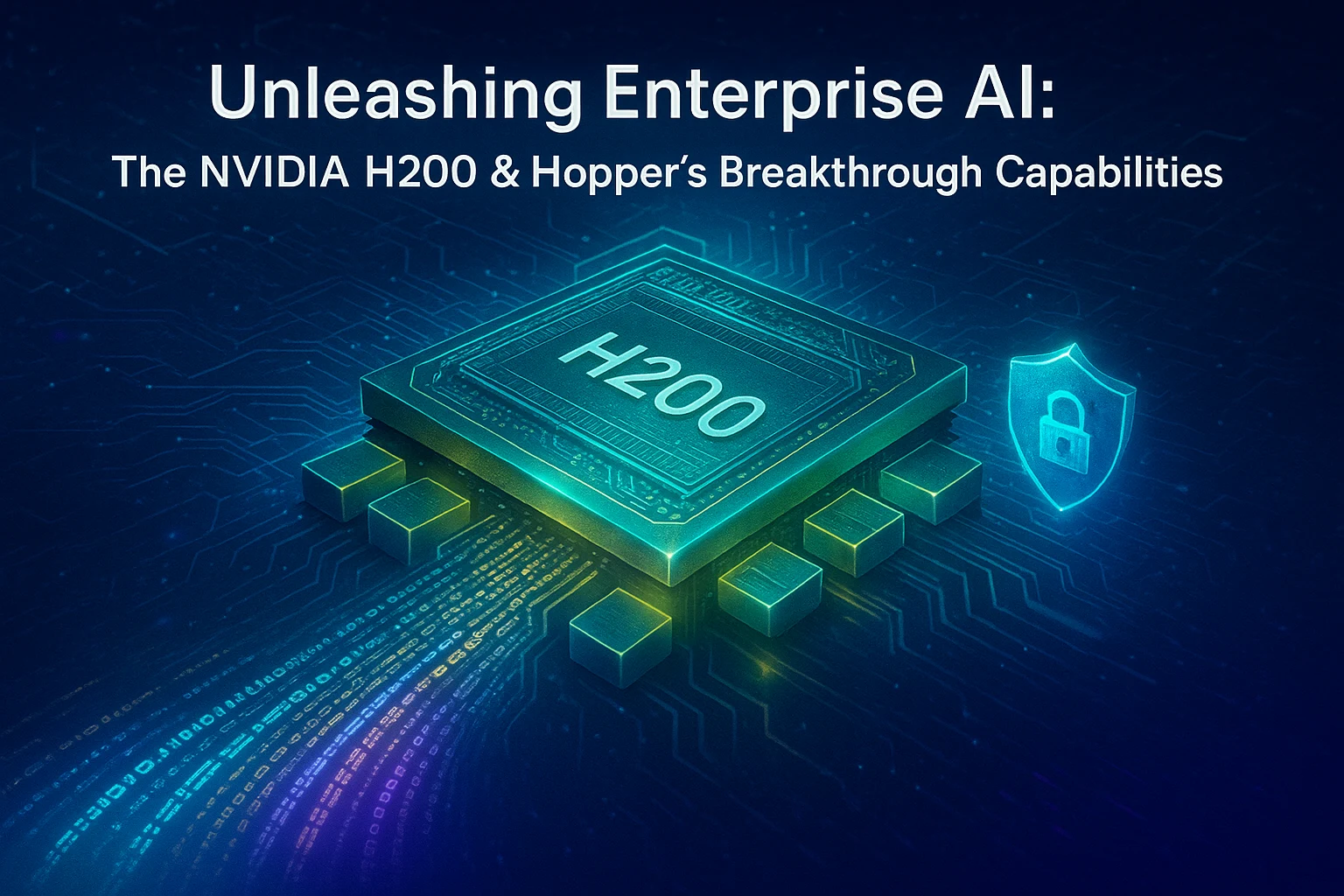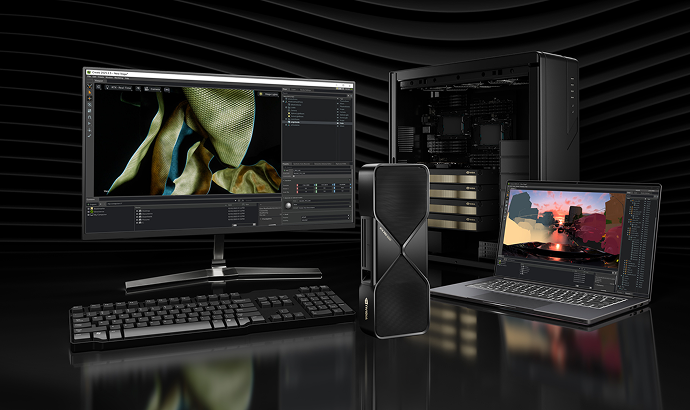

Writing About AI
Uvation
Reen Singh is an engineer and a technologist with a diverse background spanning software, hardware, aerospace, defense, and cybersecurity. As CTO at Uvation, he leverages his extensive experience to lead the company’s technological innovation and development.

The NVIDIA H200 is an advanced GPU belonging to the Hopper family, specifically engineered to accelerate demanding workloads in generative AI, high-performance computing (HPC), and enterprise-level Large Language Models (LLMs). Its core strength lies in its exceptional memory capabilities, featuring 141GB of HBM3e memory and the world’s fastest memory bandwidth, reaching up to 4.8 TB/s. This makes it a powerful accelerator designed for precision-tuned AI systems, particularly adept at handling large datasets and complex AI computations.
The NVIDIA H200 is built upon the Hopper architecture, which introduces several innovations to enhance efficiency and performance. Key features include the Transformer Engine (Gen 2), specifically designed for LLMs with dynamic mixed-precision (FP8/FP16) execution, allowing for optimal balance between speed and accuracy. Additionally, it offers Multi-Instance GPU (MIG) support, enabling the partitioning of a single H200 into multiple logical GPUs for isolated workloads, and confidential computing, which provides secure execution environments crucial for regulated industries by isolating workloads at runtime through Trusted Execution Environments (TEEs).
The H200 offers optimised performance across various precision types, making it versatile for diverse workloads. For scientific computing and simulations, it provides FP64 and FP64 Tensor Core capabilities. Standard training and general compute benefit from FP32. For AI acceleration, particularly with sparsity, it offers enhanced FP32 (TF32 Tensor Core), BFLOAT16 Tensor Core, and FP16 Tensor Core. Crucially, for Large Language Model (LLM) inference and training, the H200 excels with FP8 Tensor Core, and for deployment and edge inference, it’s highly optimised with INT8 Tensor Core, both delivering exceptional performance.
The H200 GPU significantly addresses memory bottlenecks crucial for training and inference. It boasts an impressive 141 GB of HBM3e GPU memory, which is essential for handling large models and datasets. Furthermore, it delivers a memory bandwidth of up to 4.8 TB/s, nearly 50% higher than its predecessor, the H100. When utilising NVLink, the maximum bandwidth can reach 900 GB/s. These capabilities enable faster data movement, support for larger context windows in LLMs, and improved handling of multiple users, making it highly efficient for memory-intensive AI tasks.
The H200 is designed for scalability across various enterprise environments, from workstations to hyperscale clusters. It is available in SXM and PCIe (NVL) form factors. For high-bandwidth multi-GPU scaling, particularly important for LLM training and real-time inferencing, it leverages NVIDIA NVLink, offering a bandwidth of 900 GB/s. Additionally, it provides PCIe Gen5 support with 128 GB/s bandwidth. The Thermal Design Power (TDP) varies by form factor, being 700W for SXM and 600W for NVL. These options allow for flexible deployment and robust interconnectivity for complex AI infrastructures.
For industries with stringent security requirements, such as healthcare, finance, and government, the H200 incorporates crucial features. It supports Confidential Computing through Trusted Execution Environments (TEEs), which isolate workloads during runtime, providing a secure environment. Alongside this, the Multi-Instance GPU (MIG) feature allows a single H200 to be divided into up to 7 logical GPUs, each with 16.5 GB of memory. This dual capability ensures secure multi-tenant use in shared GPU clusters and significantly improves GPU utilisation across different teams and workloads.
The NVIDIA H200’s specifications make it highly advantageous for several demanding enterprise use cases. For Large Language Model (LLM) training (e.g., LLaMA, Mistral), its FP8 precision and 141 GB memory enable the use of larger batch sizes, accelerating the training process. Real-time inference for applications like chatbots benefits from reduced latency due to efficient INT8/FP8 execution. Confidential cloud inference is made secure and efficient by the H200’s TEEs and MIG capabilities. Furthermore, High-Performance Computing (HPC) simulations in fields like physics and genomics greatly benefit from its robust FP64 and FP64 Tensor Core compute capabilities.
Enterprises typically deploy the H200 through pre-configured solutions like DGX-H200 clusters, which come equipped with necessary software frameworks such as NeMo and Triton for seamless integration. Support is often provided for optimising workloads, including FP8/FP16 optimisation for popular AI frameworks like Hugging Face and RAG workloads. To ensure efficient operation and cost management, custom observability dashboards are also offered, allowing tracking of GPU, memory, and cost-per-inference metrics. For regulated industries, specific confidential computing environments can be established, ensuring secure AI workload deployment. Enterprises can request consultations for tailored H200 deployment solutions.
We are writing frequenly. Don’t miss that.
